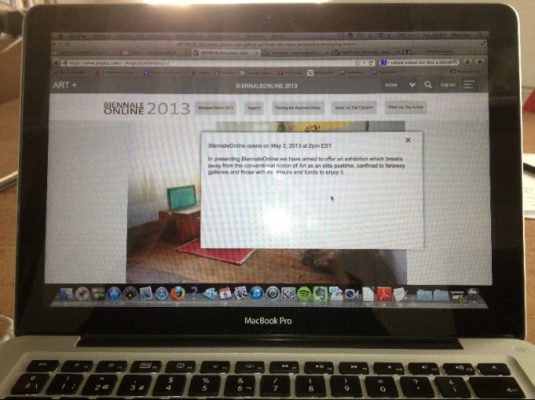Search
To search for an exact match, type the word or phrase you want in quotation marks.
A*DESK has been offering since 2002 contents about criticism and contemporary art. A*DESK has become consolidated thanks to all those who have believed in the project, all those who have followed us, debating, participating and collaborating. Many people have collaborated with A*DESK, and continue to do so. Their efforts, knowledge and belief in the project are what make it grow internationally. At A*DESK we have also generated work for over one hundred professionals in culture, from small collaborations with reviews and classes, to more prolonged and intense collaborations.
At A*DESK we believe in the need for free and universal access to culture and knowledge. We want to carry on being independent, remaining open to more ideas and opinions. If you believe in A*DESK, we need your backing to be able to continue. You can now participate in the project by supporting it. You can choose how much you want to contribute to the project.
You can decide how much you want to bring to the project.

Was the title given, in 1993, to the film by the director Manuel Gómez Pereira, which explored in a humorous vein the world of porn shows. “Why do they call it Biennial when they mean ‘name dropping’?” could be the title or summary of the proposal that concerns us here. Announced with much pomp and circumstance as “the first of its kind, curated, exclusively online biennial exhibition of contemporary art” each one of these affirmations could be the object of discussion. But we’re not going to detain ourselves here.
The biennial is organised by ART+ , “a mobile exhibition platform that combines insight from the leading experts in the contemporary art world with the transparency of fellow members’ behaviors and preferences”. And while it’s not a face-to-face event, the online biennial has all the tics of this type of event, beginning with a weakness for numbers (and also adjectives): 180 artists (promising, emerging, with talent) and 30 (international, leading). Nothing against the artists nor the curators that are simply doing their job; some providing the names of artists when they are asked for them and others facilitating images of their works. The list is fairly varied in both cases, with the “usual suspects” and others that aren’t. Amongst the curators we highlight Iara Boubnova, Hans-Ulrich Obrist, Nancy Spector, Katerina Gregos, Lorenzo Benedetti, Javier Hontoria, Cuauhtémoc Medina and Nataša Petrešin-Bachelez, amongst others. In the list of artists we’d highlight Rossella Biscotti, Falke Pisano, Ignacio Uriarte, Paloma Polo, Daniela Ortiz, Calle Holck and Ragnar Kjartansson, amongst loads of others.
The problem lies in the marketing. That is to say the distance between what is announced and what is offered. To illustrate this nothing better than the video in which the artistic director of this edition of the biennial, Jan Hoet (the one responsible for the most noteworthy works, such as the mythic Chambre d’amis (1986), Documenta 9 (1992) or museums such as S.M.A.K. in Gant or MARTa Herford) explains, with very little conviction, his apathetic and vague idea for this event, that he has titled Reflection & Imagination. We’re also not going to detain ourselves here.
Entering finally into the biennial is to go meandering through images of artists and works, with short biographical references as well as synopses of the pieces. The online biennial is nothing more than an archive of works by artists selected by a series of curators. In reality it’s nothing more than an online version of Cream (and the ones that followed, Fresh Cream, Cream 3, Ice Cream and Creamier) that the publishers Phaidon have led us to become accustomed.
It’s curious that a piece by Oliver Laric, An incomplete timeline of online exhibitions and biennials , commissioned by the biennial itself, in the end doesn’t form part of it. For as the proposal by Laric places in evidence, the idea of an exhibition or online biennial is not new. Equally, for a while now there have been artists who work with the Internet (and we’re not talking about what in its day was called “net art”, that incidentally has aged fairly badly). Three years ago, for example, the Vip Art Fair appeared, an online art fair that continues its activities via Vip Art. One of the aspects that stands out of the artifices of the Online Biennial as much as of VIP Art is the quantity of registered users and the possibility of making selections and tagging favourites, that the tastes and preferences of the users end up being associated with their profiles and that themed social networks can be created. And it doesn’t seem over the top to think that this leads directly to “big data” as a marketing tool.

Montse Badia has never liked standing still, so she has always thought about travelling, entering into relation with other contexts, distancing herself, to be able to think more clearly about the world. The critique of art and curating have been a way of putting into practice her conviction about the need for critical thought, for idiosyncrasies and individual stances. How, if not, can we question the standardisation to which we are being subjected?
www.montsebadia.net
"A desk is a dangerous place from which to watch the world" (John Le Carré)